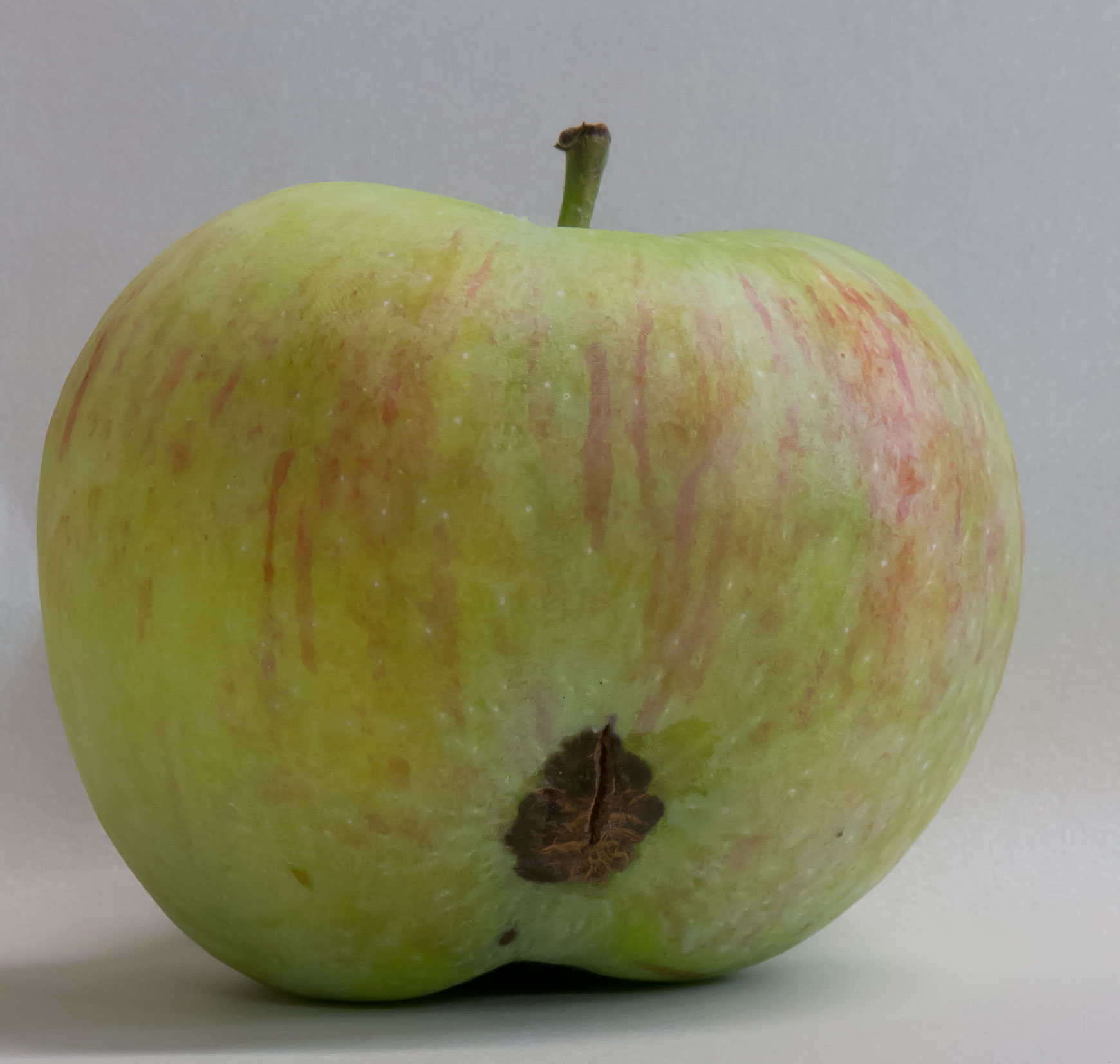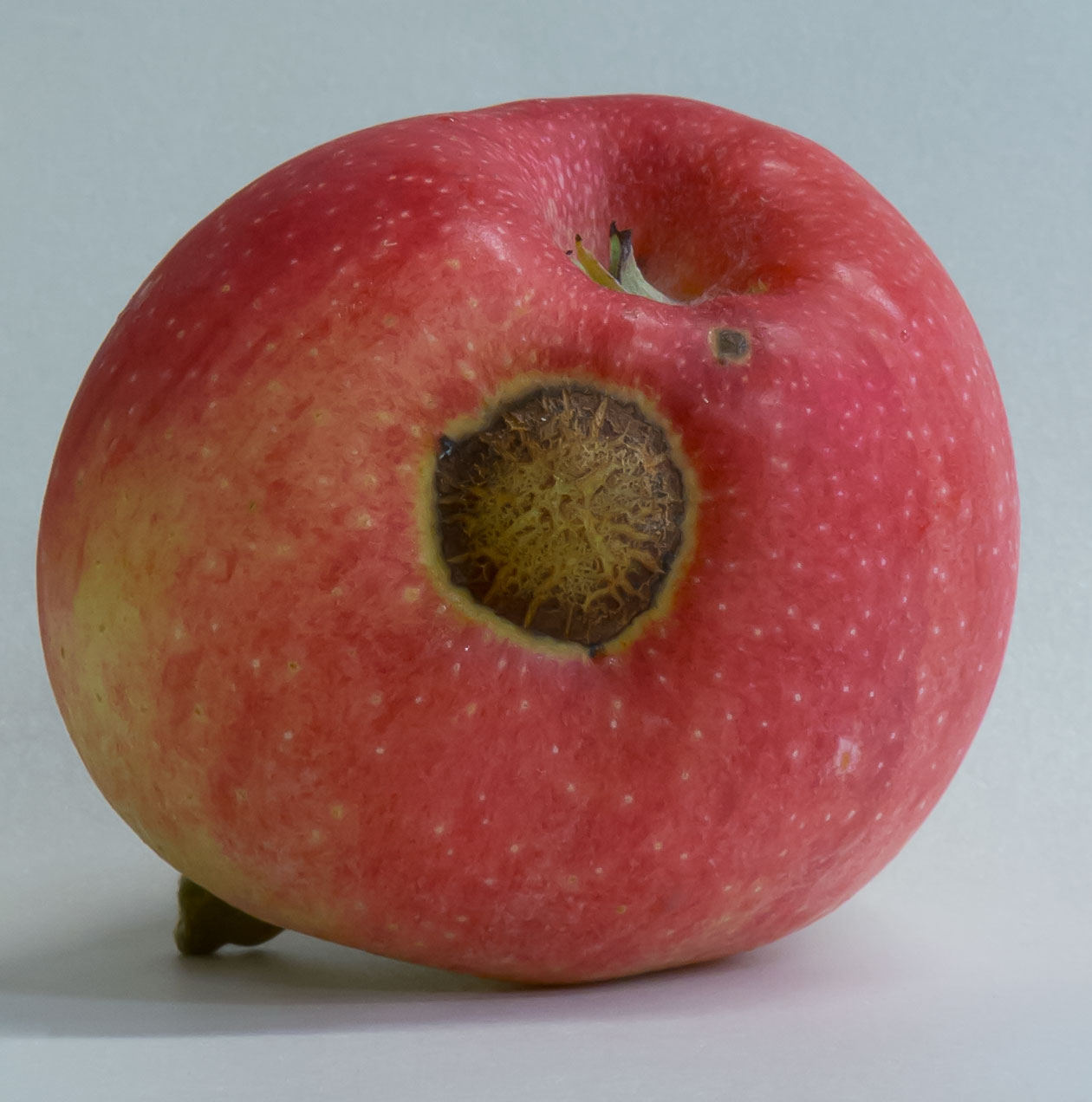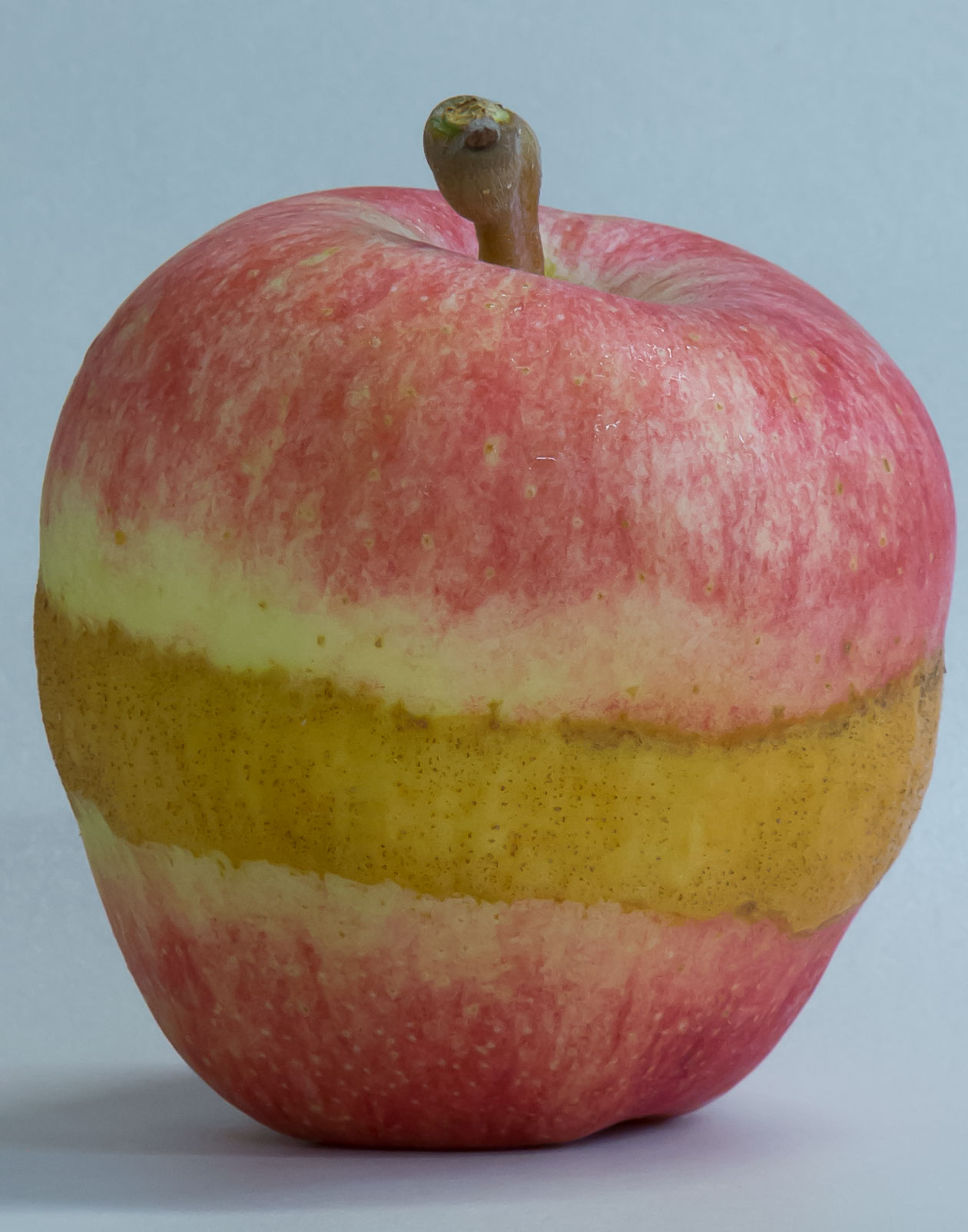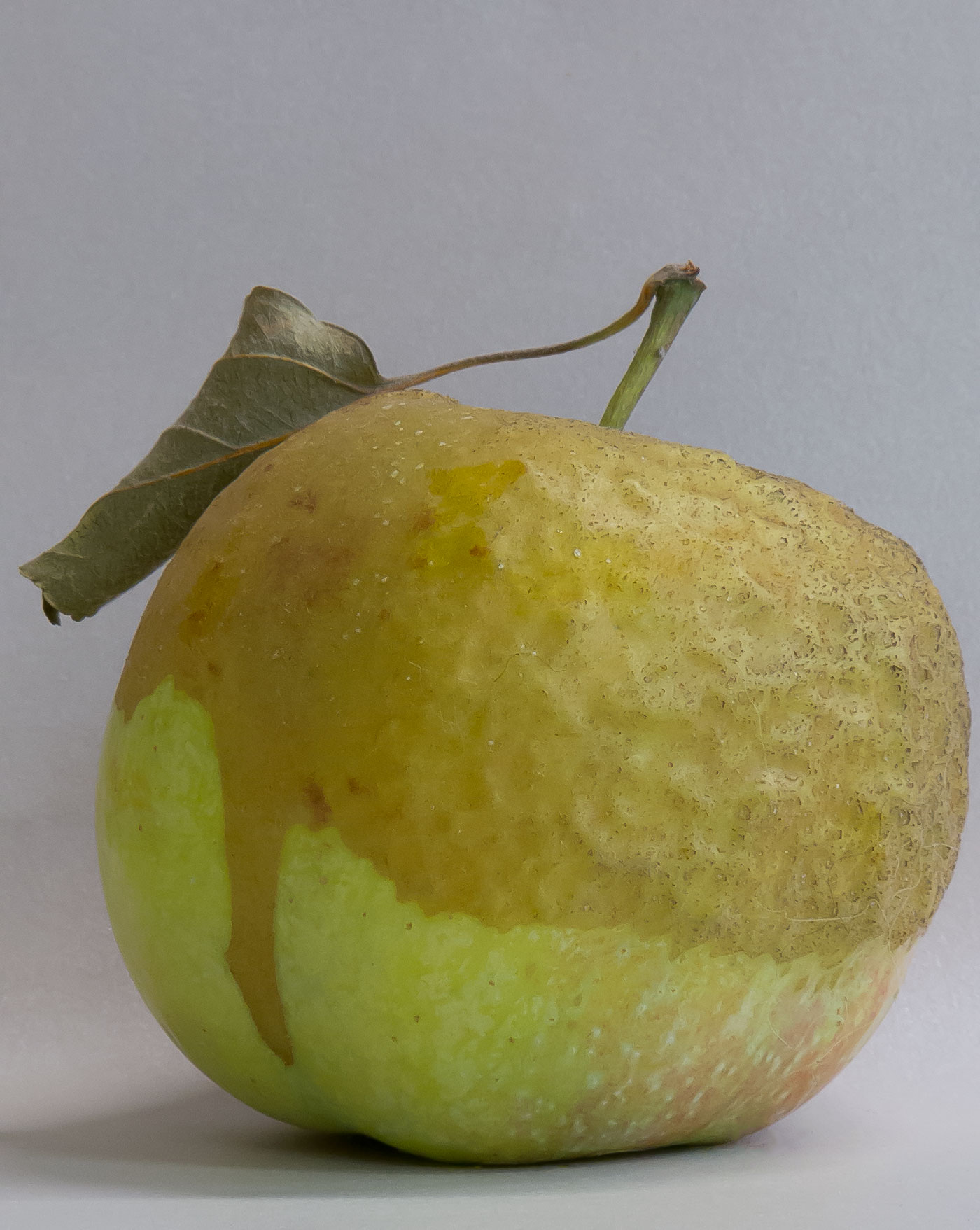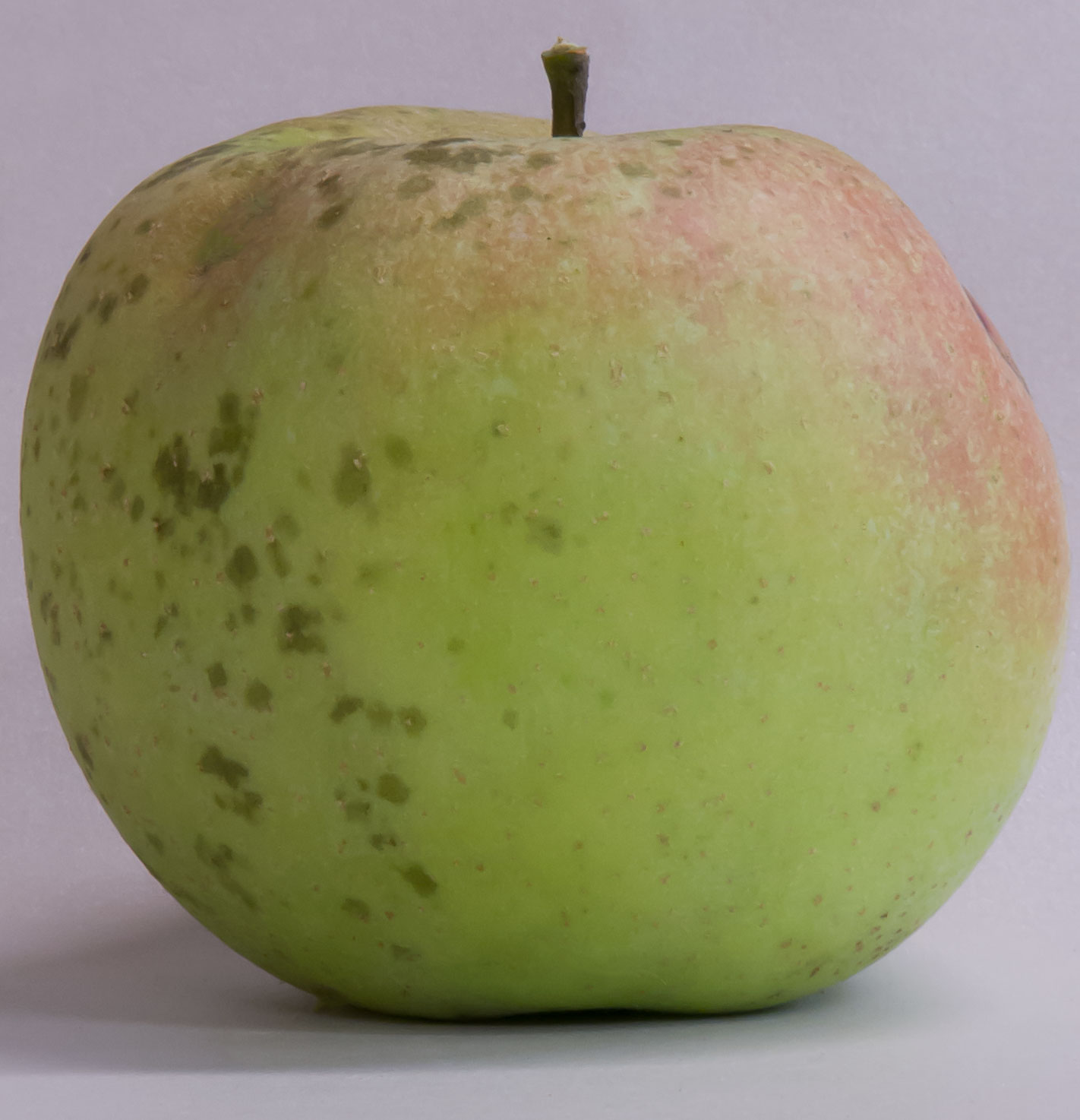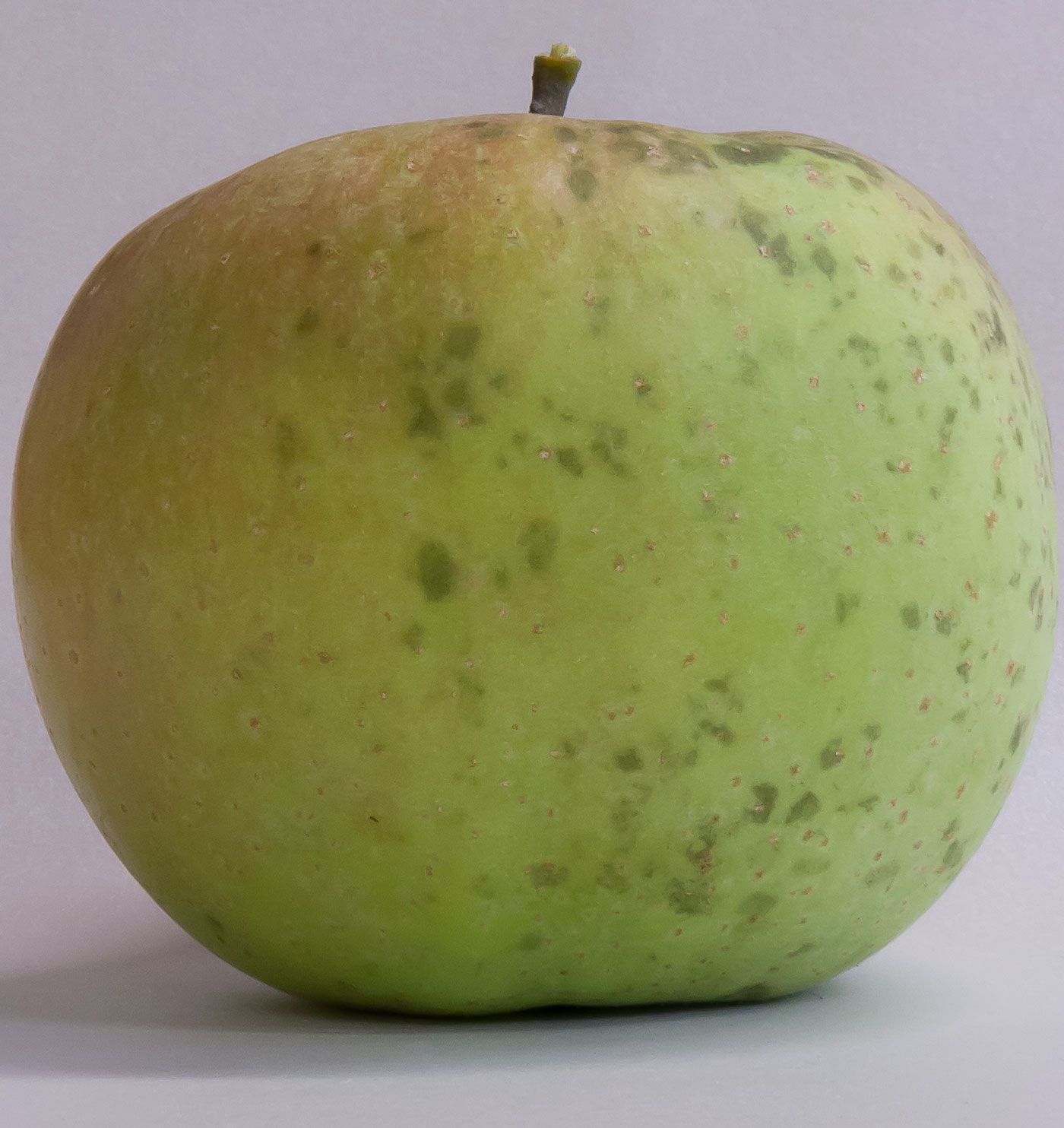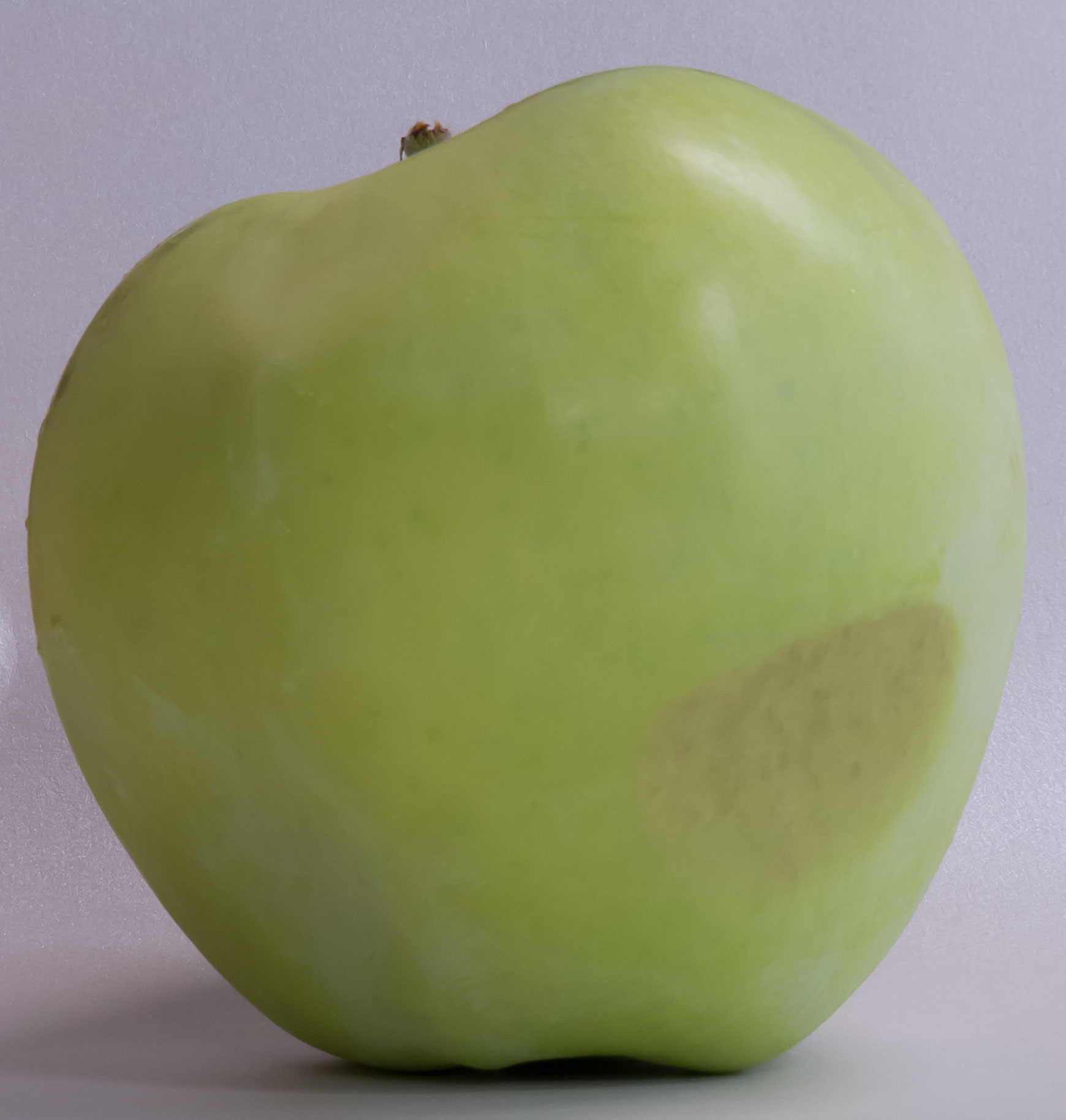In the wake of the mid-May freeze of 2016, we wanted to start doing more to educate our customers about "blemishes" on our fruit. Because of our low-input philosophy, you've probably already noticed that we have a higher percentage of less-than-perfect fruit than other orchards (let alone supermarket offerings). And yes, some damage can affect the flavor and integrity of an apple, but the fact is MOST skin damage does absolutely nothing but mar the external appearance.
Grower Eliza Greenman started the #eatuglyapples movement. Read more about her work on her excellent blog here.
Below are some examples of cosmetic damage you might see on your fruit:
Apple Scab: Scab is a fungus that first shows up on the leaves of apples and then affects fruit. In 2019 the incredible amount of rain and humidity we experienced in the spring and summer gave us more scab than usual, but thankfully not as much as in 2017 or 2018. Some varieties are more susceptible than others--you will see the worst of it on our McIntosh and Gala. Mild scab does not affect the interior of the apple in any way. Just peel or cut it off and enjoy as usual. Here's what a scab lesion looks like:
Frost Damage: The big, bad wolf of 2016. Our lowest elevation orchard block was hit by a freeze just before bloom. Some flowers immediately aborted and fell off the trees. Some didn't, but the cells exposed were damaged. The apple managed to hang on and develop throughout the summer. As the fruit expanded, the damaged area remained until finally it looked like a "ring" or "cap" of russeted skin. Hence the term "frost ring". You can peel the russeted skin off or eat it right along with the rest of the apple. Here are examples of frost damage:
Plum Curculio: This tiny weevil both feeds on and lays eggs in apple. However the damage made is usually minimal. In addition, the expanding cells of the apple crush any egg or larvae that was deposited in early spring. Nothing to worry about! Again, just peel or cut off the blemish. Or eat it. Here's what a "PC" scar looks like on the skin of the apple:
Sooty Blotch and Fly Speck: These two fungal "summer diseases" develop on the surface of the apple. They are more common when late summer and fall is hot and humid, and are more noticeable on light colored apples. Both can either be wiped or washed off. Or if you're peeling the apple, they will come right off with the peel. Or you can just eat them as is. Here is what Sooty Blotch and Fly Speck look like:
Bruising: We do our utmost to prevent bruising when picking, grading, and packing our fruit. But sometimes it happens. Apples need to be handled as gingerly as eggs to prevent finger bruises and dents where fruit hits against another fruit. When a box of apples has been out on the shelf in our store for a bit, sometimes bruises show up when a customer has "rifled" through the box. However the bruise occurs, if it is small it won't affect the apple too much, especially if you are going to eat or cook with it right away. Here's what a bruise looks like:
______________________________________
Inherently "ugly" apples:
Beyond blemishes, some people consider many of our heirlooms "ugly". They certainly don't look like most modern supermarket specimens, even when unmarred by the above blemishes. Look for our handful of naturally russeted apples (Ashmead's Kernel,Golden Russet, Roxbury Russet, Hudson's Golden Gem), our crab apples, oddly shaped and colored apples like Kandil Sinap and Black Gilliflower--and many more. Behind that unconventional exterior lies great taste!
